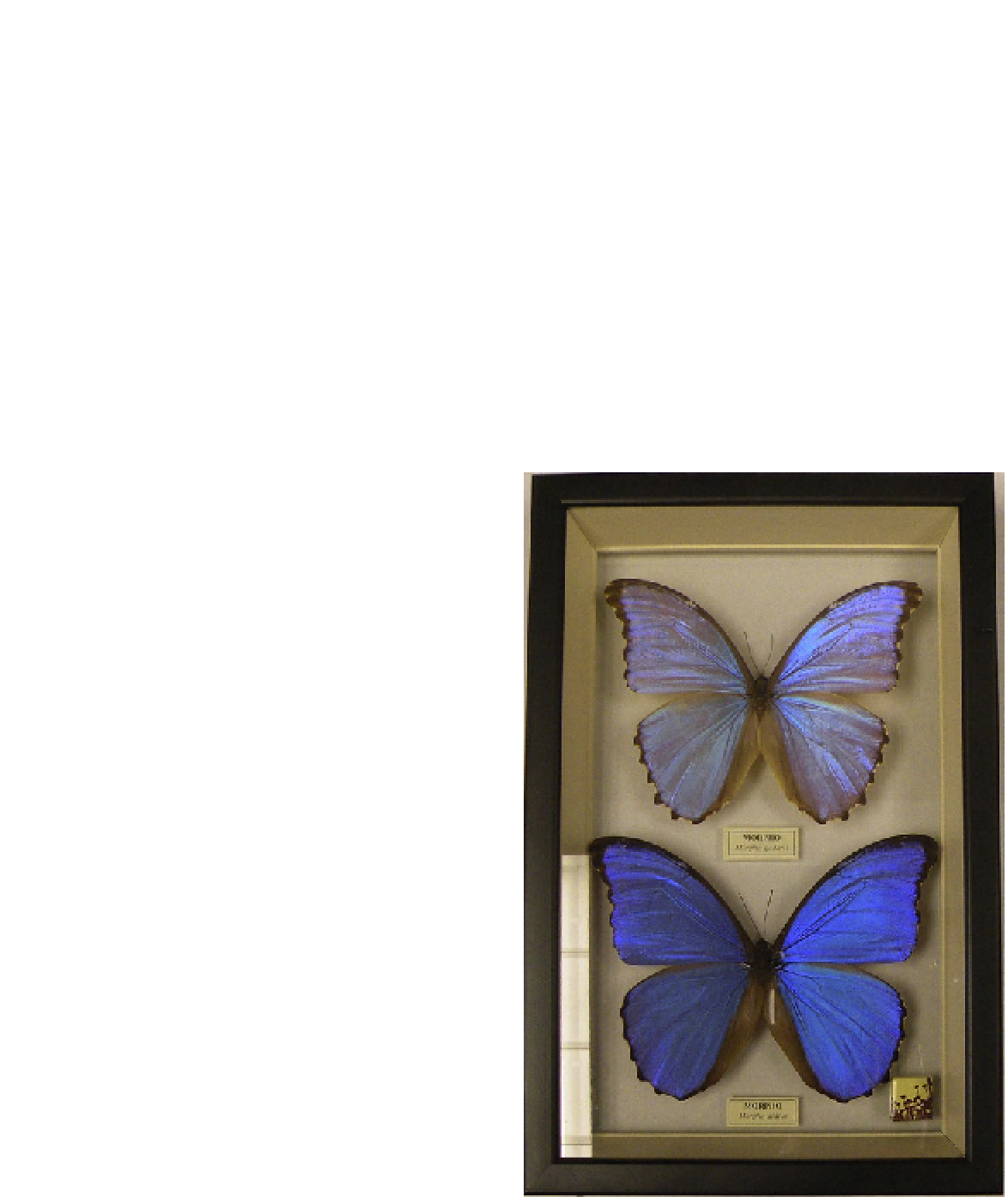Biomedical Engineering Reference
In-Depth Information
Although colors of physical origin have been
studied by technoscientists and artists alike,
colors that have chemical origin have spawned
and sustained entire industries, some for several
millennia. However, physical colors are assum-
ing technical importance nowadays because
their production does not entail the release of
volatile organic compounds that not only pol-
lute the environment and are hazardous to life
but also wreak havoc on endocrine systems,
even when present in trace amounts.
green colors observed in some butterfly species.
For instance, some species of the
Morpho
genus
found in the tropical and subtropical forests of
South America flash magnificent blue colors
with strong iridescence and metallic glossiness,
as shown in
Figure 11.1
. So bright is the color
of its wings that a
Morpho
butterfly can be seen
from a distance of a few kilometers. Although
pigment granules, mainly biopterin, have been
found in the scales of some
Morpho
species, their
quantity is considered to be insufficient to gener-
ate color
[3-5]
. Instead, it has been conclusively
established during the last two decades that the
blue colors of
Morpho
butterflies are caused by
the complex structure of the wing scales.
11.1.1 Pigmental (Chemical) Colors
Chemical colors are produced by absorption of
light in
pigments
, which are substances of definite
chemical composition. The colors produced vary
with the chemical nature of the pigment. Natu-
ral pigments can be extracted from the colored
tissues of plants, woad, shellfish, or lichens by
appropriate reagents. Pigments react to light in
the same way, whether they are within or outside
a biological object. Tissue or organisms showing
only pigmental colors never have a surface gloss.
Their color is not altered by immersion in any
medium that does not chemically attack the pig-
ment
[2]
. The extraction of chemicals from plants
and animals and their conversion into dyes and
pigments have a history of several millennia.
Only over the last 150 years have natural dyes,
pigments, and inks been replaced, gradually at
first but rapidly later, by the products of modern
organic chemistry.
11.1.2 Structural (Physical) Colors
Butterflies need no introduction for the brightly
iridescent wing surfaces a multitude of their
species display. Colors in their wings arise from
either pigments or the micro and nanostruc-
ture of scales, or both. Pigments (melanins and
pterins, chiefly) found in butterfly wings pro-
duce yellow, orange-yellow, red, black, and
brown colors. However, there are no pigments
that can produce the iridescent blue, violet, and
FIGURE 11.1
Shadow box displaying (top)
Morpho
godarti
and (bottom)
Morpho didius
.

